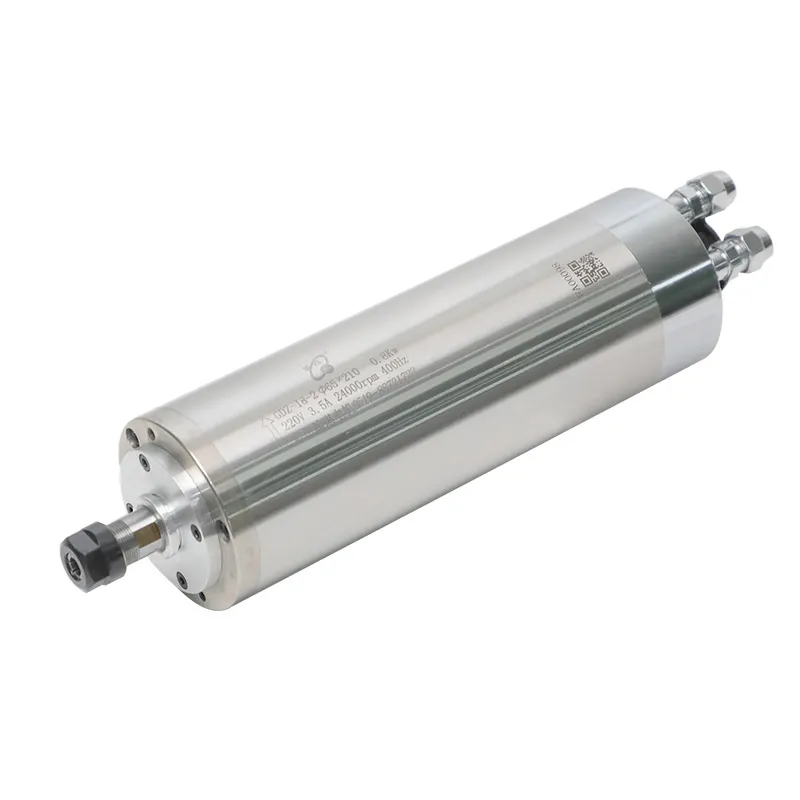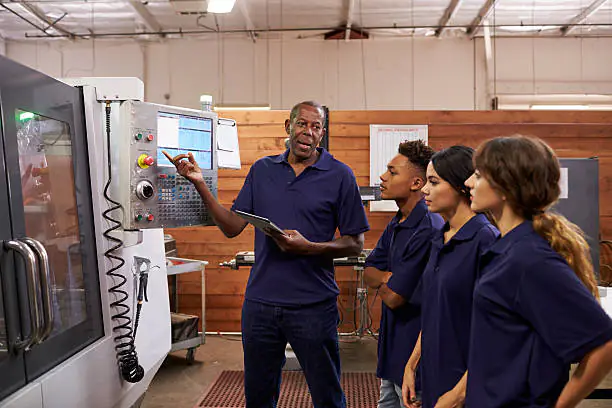CNC, which stands for Computer Numerical Control, is a term commonly heard in manufacturing and machining industries. But what exactly does a CNC do? In this article, we will delve deep into the world of CNC machines, exploring how they work, what they do, and why they are essential for modern production processes. By understanding CNC technology, you can see how it transforms raw materials into precise, high-quality products across a variety of industries.
The Basics: What is CNC?
CNC machines are automated tools controlled by a computer, used for cutting, shaping, and forming materials. The term CNC refers to Computer Numerical Control, meaning a computer controls the machine’s movements based on a set of pre-programmed instructions. These machines are used to produce highly accurate parts that are essential in numerous industries like automotive, aerospace, and electronics.
The main components of a CNC machine include:
- Control Unit: The computer that processes the program and sends signals to the mechanical parts.
- Motors and Drive System: Responsible for moving the machine’s parts based on instructions.
- Spindle: Holds the cutting tool and spins at high speeds to shape the material.
- Machine Bed: Provides support to hold the workpiece securely during operations.
The entire operation revolves around precision and automation, which makes CNC machines a backbone of modern manufacturing processes.
How Does a CNC Machine Work?
A CNC machine operates using a specialized language called G-code. This code contains all the instructions that guide the machine, including how fast to move, where to move, how deep to cut, and what speed to use. The process involves several steps:
1. Designing the Part
The first step is designing the part in a CAD (Computer-Aided Design) program. This could be software like Fusion 360 or AutoCAD, which allows engineers to create precise models of the product.
2. Generating Toolpaths
Next, the CAD file is converted into G-code using a CAM (Computer-Aided Manufacturing) software. The toolpaths determine how the machine moves to shape the material, guiding the cutting tool to follow specific paths.
3. Material Cutting
The machine cuts the material by moving the cutting tool along the programmed paths, shaping the raw material into the final product. This is where the spindle comes into play. For instance, a water-cooled spindle, like the 24000RPM 0.8KW ER11 Water-Cooled Spindle  , provides both the precision and cooling needed for long sessions.
, provides both the precision and cooling needed for long sessions.
Types of CNC Machines
There are several different types of CNC machines used for various purposes. Each type of machine is tailored to specific tasks and materials.
1. CNC Milling Machines
CNC milling machines use rotary cutters to remove material from a workpiece. These machines are used to create parts with complex geometries, often in metalworking and tool making.
- Typical Materials: Metal, plastic, and wood.
- Applications: Gear components, brackets, molds.
2. CNC Lathes
CNC lathes rotate the workpiece against a fixed cutting tool to remove material. This type of machine is ideal for creating cylindrical parts like shafts and bushings.
- Typical Materials: Metals such as aluminum and steel.
- Applications: Bolts, pins, and mechanical parts.
3. CNC Routers
A CNC router is similar to a milling machine but is mainly used for cutting softer materials like wood, plastic, and foam. It’s a versatile machine often found in woodworking shops.
- Applications: Engraving, cabinetry, sign-making.
- Spindle Type: Air-cooled spindles are common for CNC routers due to ease of use. For example, the 2.2KW ER20 Air-Cooled Spindle is a great option for woodworkers and hobbyists.

4. CNC Plasma Cutters
CNC plasma cutters use a plasma torch to cut through metal. They are well-suited for cutting large sheets of steel or aluminum and are often used in fabrication shops.
- Applications: Metal signs, industrial parts, automotive components.
5. CNC Laser Cutters
Laser cutters use a high-powered laser beam to cut or engrave materials. They are highly accurate and used for both industrial applications and creative projects.
- Typical Materials: Metal, plastic, wood, and glass.
- Applications: Precision engravings, sign-making, jewelry.
Advantages of CNC Machines
CNC machines have revolutionized manufacturing by introducing precision, efficiency, and reliability. Here are some of the key advantages:
1. High Precision and Accuracy
One of the biggest advantages of CNC machines is their ability to create highly precise parts. With tolerances often within microns, CNC ensures the production of parts that meet strict industry standards.
- Repeatability: CNC machines can repeat the same cut or operation as many times as needed without any loss of accuracy, which is crucial for mass production.
- Complex Geometries: CNC allows for the creation of parts with complex geometries that would be impossible or extremely time-consuming to produce manually.
2. Reduced Human Error
CNC machines operate based on computer programs, which eliminates many of the inconsistencies associated with manual machining. Once the program is perfected, you can produce a large number of identical parts with minimal chance for error.
“Using CNC technology minimizes the likelihood of mistakes, thereby reducing the cost associated with rework or material wastage.”
3. Enhanced Production Speed
CNC machines can run continuously, allowing manufacturers to produce parts at much faster rates than traditional manual machining. This is particularly beneficial in high-volume industries where production efficiency is a critical metric.
Applications of CNC Machines
CNC machining is employed in a wide variety of industries and for numerous applications.
1. Automotive Industry
In the automotive industry, CNC machines are used to create engine parts, gearboxes, and suspension components. They are instrumental in ensuring that all parts meet stringent safety standards.
- Prototyping: Car manufacturers often use CNC to create prototypes quickly, allowing for testing before full-scale production.
- Mass Production: Once a design is finalized, CNC machines help in the mass production of automotive components with consistent quality.
2. Aerospace Industry
The aerospace industry requires parts that are lightweight yet incredibly strong. CNC is used to machine parts from titanium and other aerospace-grade materials to precise specifications.
- Critical Components: Parts such as turbine blades and landing gear components require precise machining for safety and reliability.
3. Electronics Industry
In the electronics industry, CNC machines are employed to create parts like heat sinks and housing components that need high precision to ensure proper fit and function.
- Circuit Boards: CNC can even be used to create complex printed circuit boards (PCBs), ensuring precision during high-volume production runs.
What Does a CNC Machinist Do?
A CNC machinist is responsible for setting up and operating CNC machines. This includes loading materials, inputting the program, and adjusting machine settings. They must understand the G-code, troubleshoot issues, and ensure that the finished product meets the required specifications.
Key Responsibilities:
- Machine Setup: Adjusting the machine based on the material type and part design.
- Quality Control: Measuring finished parts to verify they meet specifications and making adjustments as needed.
- Maintenance: CNC machinists also perform regular maintenance, ensuring that the machine is clean and that all parts are in good working condition.
Software Used in CNC Machining
Software is a crucial aspect of CNC machining. There are typically two types of software used: CAD software for designing and CAM software for creating the toolpaths.
1. CAD Software
CAD (Computer-Aided Design) software helps in creating detailed designs and drawings.
- AutoCAD and Fusion 360 are some of the most popular CAD programs for CNC users, offering powerful design capabilities.
2. CAM Software
CAM (Computer-Aided Manufacturing) software takes the CAD design and converts it into G-code.
- Mastercam and VCarve are popular CAM tools that offer a wide range of features for CNC programming.
Frequently Asked Questions About CNC Machines
1. What industries use CNC machines the most?
Industries such as automotive, aerospace, furniture, and electronics use CNC machines extensively for manufacturing precision parts.
2. How does CNC ensure accuracy?
CNC machines ensure accuracy by following a computer-generated program (G-code), which precisely dictates all movements, speeds, and depths to be cut.
3. Can CNC machines cut any material?
While CNC machines can cut a wide range of materials—such as wood, plastic, metal, and even composites—the machine type and spindle power determine which materials it can handle.
4. What skills does a CNC machinist need?
A CNC machinist needs knowledge of G-code, understanding of CAD/CAM software, attention to detail, and basic troubleshooting skills to maintain machine accuracy.
5. Are CNC machines used for prototyping?
Yes, CNC machines are often used for prototyping because they allow for rapid iteration, making it easy to test and adjust designs before mass production.
Conclusion
CNC machines are a cornerstone of modern manufacturing, offering precision, efficiency, and the ability to produce complex parts that meet the stringent demands of industries like automotive, aerospace, and electronics. Whether you are curious about how they work, their applications, or how they are programmed, CNC technology is indeed fascinating and critical to today’s production environment.
If you are interested in diving deeper into CNC machining, consider upgrading your current tools or building your own machine. Reliable spindles, like those available at Spindle Motor Shop, such as the 1.5KW ER11 Round Air-Cooled Spindle, will ensure that you achieve the precision needed for your projects. Equip your CNC machine with high-quality components and take full advantage of what CNC can do!

